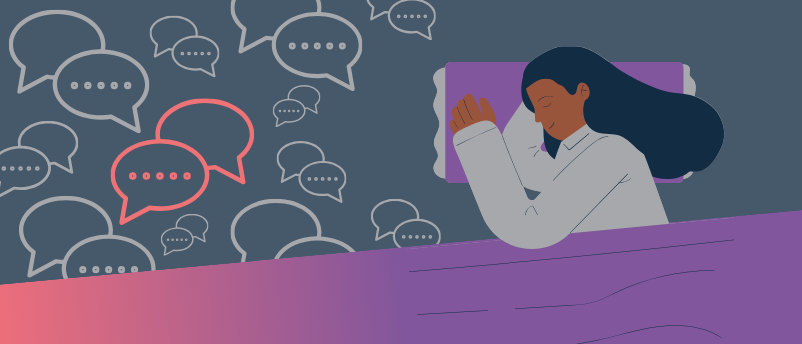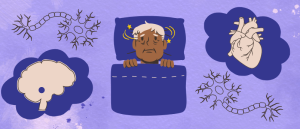
BioTechniques News
Beatrice Bowlby

A new study has revealed that sleep isn’t quite the unconscious state we thought it was as individuals respond to verbal communication by contracting their facial muscles in some stages of sleep.
A collaboration between researchers at Paris Brain Institute and the Sleep Pathology Department at Pitié-Salpêtrière University Hospital in Paris (both France) has demonstrated that the interface between the sleep state and the wakefulness state is more porous than previously thought. This study provides a greater insight into how we define the different stages of sleep in a clinical setting, allowing researchers to better understand this intermediate state that, when dysregulated, can lead to sleepwalking, sleep paralysis or hallucinations.
Usually, when studying sleep, researchers look at the brain waves of an individual in a sleep test using electroencephalography, relying on these measurements to distinguish different stages of sleep and wakefulness. However, this type of test doesn’t provide the comprehensive report necessary to truly interrogate the minds of sleepers. The team set out to determine finer physiological measurements that could be used to understand the sleepers’ experience.
They explored this by gathering 22 participants without sleep disorders and 27 individuals with narcolepsy. Those with narcolepsy often experience lucid dreams, which is the awareness of being asleep, sometimes even allowing them to control their dreams. Due to their easy and quick fall into REM sleep during the day, those with narcolepsy are good candidates for studying consciousness under experimental conditions.
Co-senior author Delphine Oudiette (Paris Brain Institute) explained: “One of our previous studies showed that two-way communication, from the experimenter to the dreamer and vice versa, is possible during lucid REM sleep. Now, we wanted to find out whether these results could be generalized to other stages of sleep and to individuals who do not experience lucid dreams.”
 Role of ganglia in heart-disease-associated sleep disturbance
Role of ganglia in heart-disease-associated sleep disturbance
Researchers report a previously unknown role of ganglia, clusters of nerve cell bodies, in sleep disturbances frequently experienced by people with heart disease.
They asked each participant to take a nap, then proceeded to give the participants a lexical decision test. This test required participants to smile or frown in response to a human voice reciting either real or made-up words, respectively. Throughout, participants were monitored using polysomnography, which records comprehensive heart and brain activity, eye movement and muscle tone. Upon waking, the participants were asked whether or not they experienced a lucid dream during their nap and if they remembered interacting with someone.
“Most of the participants, whether narcoleptic or not, responded correctly to verbal stimuli while remaining asleep. These events were certainly more frequent during lucid dreaming episodes, characterized by a high level of awareness. Still, we observed them occasionally in both groups during all phases of sleep,” co-senior author Isabelle Arnulf (Pitié-Salpêtrière University Hospital) concluded.
Analyzing the behavioral and physiological data in conjunction with participants’ subjective reports revealed the point at which sleeping participants could start responding to stimuli, characterized by an acceleration in brain activity and physiological indicators associated with rich cognitive activity.
“Even if it seems familiar because we indulge in it every night, sleep is a highly complex phenomenon. Our research has taught us that wakefulness and sleep are not stable states: on the contrary, we can describe them as a mosaic of conscious and seemingly unconscious moments,” commented Lionel Naccache (Pitié-Salpêtrière University Hospital), co-senior author on the paper.
Further research is necessary to investigate whether the frequency of these communicative windows is correlated with sleep quality as well as how these windows could be used to improve sleep disorders. This study could lead to improved and standardized protocols that clinicians use to communicate with sleeping individuals, facilitating better assessment of how cognitive activity changes during sleep.
The post The lullaby study: re-evaluating consciousness during sleep appeared first on BioTechniques.
Powered by WPeMatico
